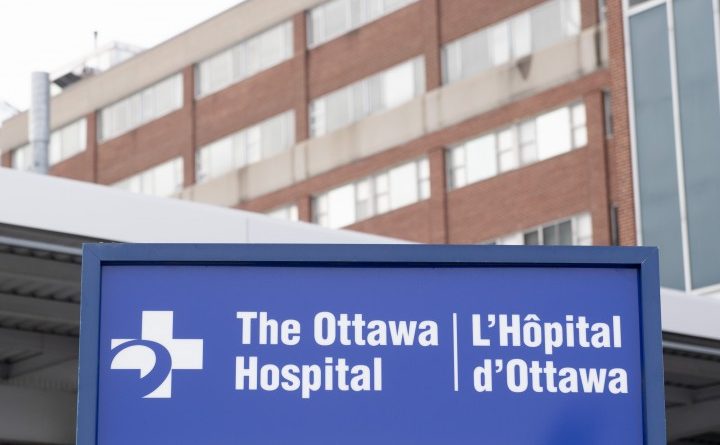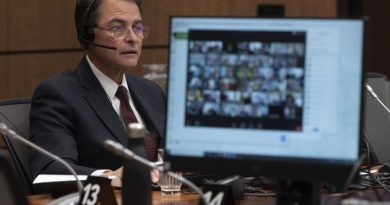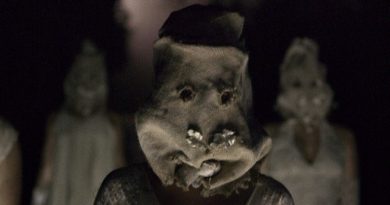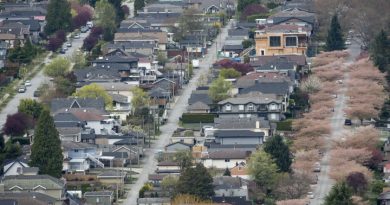Bodies placed in odd spots in Ottawa hospitals as morgues overflow
OTTAWA — Lou Burri says a body stored in a hospital conference room first set an alarm bell ringing in his head last October.
The hospital denies that happened, but the union leader at the Ottawa Hospital says his members have kept encountering cadavers in unexpected parts of its buildings, because there are more bodies than the hospital can contain in its morgues.
Burri said the issue has grown as the hospital’s infrastructure is stretched further beyond capacity, with no evident way to clear the overflow.
“I’ve been talking to senior management at the Ottawa Hospital and they’re not happy that this is going on. They don’t have the money to do anything — it’s all funding, everything’s funding,” Burri said.
“It is a black eye for the Ottawa Hospital, for sure. They strive on being health care leaders and it’s unfortunate this is happening, but maybe this will light a fire on trying to get some stuff resolved for them.”
The hospital has two major campuses and is the largest health institution in the capital.
In a statement, the hospital said bodies had to be placed outside morgues during “an extraordinary period in December.” Space once used for autopsies has been converted to manage the “unexpected surges in demand,” the statement said, adding that conference rooms aren’t used to house bodies.
The Ottawa Hospital suggested its experience was not unique: “Because of the growing aging population, the shortage of morgue spaces is a challenge for many hospitals across the province.”
In Vancouver, the opioid epidemic has put a strain on resources. In Alberta, the province’s chief medical examiner had to rent a refrigerated trailer last year after an Edmonton morgue reached capacity.
In Ontario, the provincial auditor general flagged the issue in her most recent report in early December. Bonnie Lysyk noted that one hospital in the province kept bodies in hallways, or in body bags “sometimes stored side by side or on top of each other in storage spaces” because it had nowhere else to put them.
“It’s not going to get better. In fact, it’s going to get worse with an aging population,” said Allan Cole, vice-president of the Funeral Services Association of Canada.
Ottawa’s hospitals conduct autopsies on many people who die in and around the region and bodies can sit for weeks or longer before they are claimed, if they are claimed at all.
Ontario’s chief coroner reported in June that there were 473 unclaimed bodies in 2018, an increase from the 401 in 2017. The office attributed that rise to better figures from a centralized tracking system. Figures for 2019 are not yet available.
The claiming process can be relatively fast for someone who dies in hospital — a funeral home often takes charge of a body almost right away — but can take longer if an autopsy is required or a body is brought in from the surrounding community.
“Usually people claim — the families and others claim the body soon after the autopsy is completed,” said Dr. Louise McNaughton-Filion, the regional supervising coroner in Ottawa.
“And there is the other group where somebody passes away in the community and the body has to be stored until family is found, or next-of-kin is found.”
A difficult search for a next-of-kin involves police and checks of financial records, required under provincial law. When that fails, municipalities become responsible for burials.
In the meantime, the unclaimed bodies take up space in hospitals. McNaughton-Filion said each hospital usually has its own morgue, but the type and size can vary.
Down the highway from Ottawa is another regional centre in Kingston, Ont.
Kingston Health Sciences Centre’s chief operating officer, Troy Jones, said the hospital faces “challenges accommodating a high number of deceased persons in its morgue from time to time,” usually from delays in release. Those challenges, he said, should ease when a planned redevelopment of Kingston General Hospital enhances the morgue space.
By: Jordan Press.
© The Canadian Press, 2020. All rights reserved. This material may not be published, broadcast, rewritten or redistributed.




